On the Road – Distance 88km / 55mi | Elevation 1271m / 4170ft
We started our ride with a temperature of 0C (32F). This is cold for riding but for those flatlanders reading this post, add a 10% grade descent and the wind chill easily took us to about -!0C! I had a baselayer, jersey, winter cycling jacket, balaclava, long fingered gloves, leg warmers, shoe covers and foot warmer pads, and it felt like I just had a jersey on for the first 1000 ft of descent!!

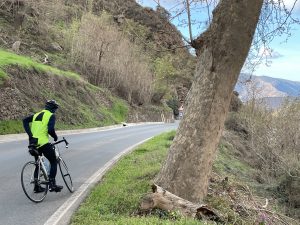
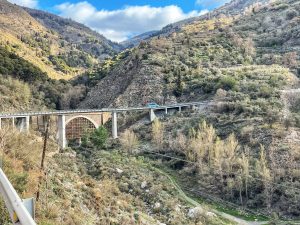
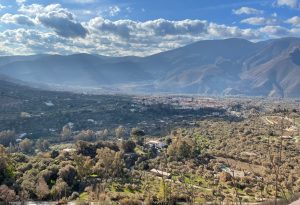
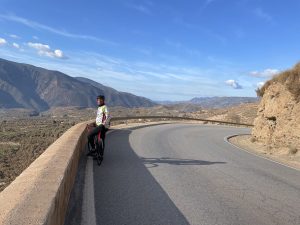 At this point, the temperature has risen slightly to ease the pain!
At this point, the temperature has risen slightly to ease the pain!
But it was an amazing start to the day with 20km descent with average grade of 10% down the western traverse of the Sierra Nevada – I made sure you stop in the valley for great views back up at Capileira and Bubión our home for last night, but also to check to see if my hands were still with me! We circled the western edge of the Sierra Nevada National Park, working our way around to Granada, one of Spain’s best cities and our home for the next two nights. Although we had a little work to do getting into Granada as it is a big town, this is the centre of some of Spain’s best cycling so bike lanes are regular and the traffic is respectful. It was Saturday and the cyclists were out in abundance, individual and teams, great to see!
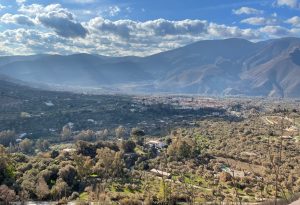


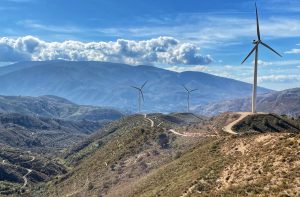
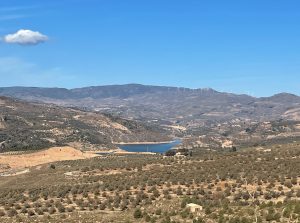
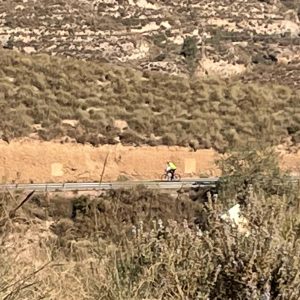

Of course, the coffee break…espresso, cafe con leche, capuccino.
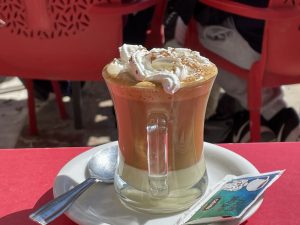

More riding and a little light lunch at a cafe in a little town…
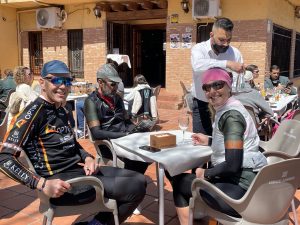
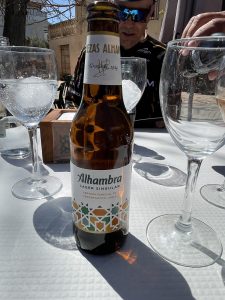 Alhambra lager, Grenada’s own!
Alhambra lager, Grenada’s own!
Our destination hotel, the Alhambra Palace sits at the foot of Granada’s most famous monument – The Alhambra.

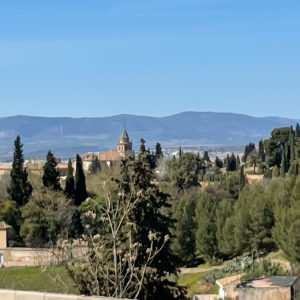


Check out my Relive video for today here!: https://www.relive.cc/view/vRO7gVE9GyO
Dinner tonight was situated with an amazing view of Alhambra
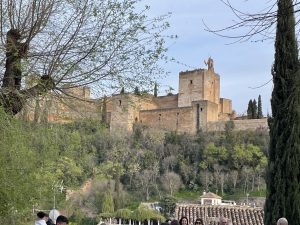
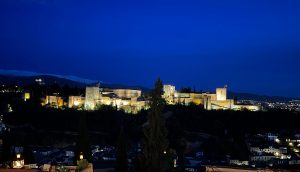
We will tour there tomorrow on our rest day, after sleeping in for a change! Later will be laundry and then hunt down some cool tapas bars in Granada, and maybe catch some Flamenco! Ola! But that is tomorrow and now I sleep! The last 3 days have ridden about 250km with 18,000ft of climbing…rest will be welcomed. Ciao!

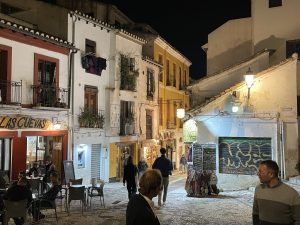
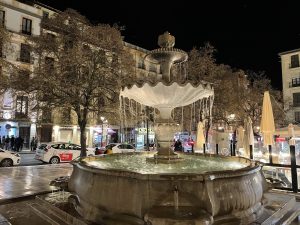
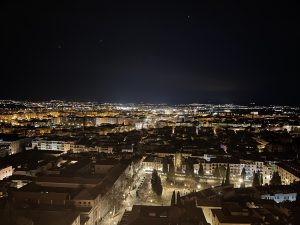
History of the Alpujarras
The Catholic “Reconquista” of Spain progressed to the extent that by 1462 only the Emirate of Granada – including the Alpujarras – was left in Moorish hands; and in 1492 the city of Granada fell to the “Catholic Monarchs”. Their attempts to force Christianity on the Muslim inhabitants led to successive revolts, the Rebellion of the Alpujarras (1499–1501) and the Rebellion of the Alpujarras (1568–1571). The revolt of 1568 was a civil war, with the Spaniards deploying large forces against this rural population and with much cruelty on both sides. The revolt ended with the death of the last Moorish leader in March 1571.
The Catholic Monarchs ordered the expulsion of Moors from the territory of Granada, who were taken in forced marches to other parts of Spain.
Starting in 1571, settlers were brought in from all over Spain; many came from as far away as Galicia. Though they were given various financial incentives, the re-settlement provided difficult. The population of the Alpujarra, estimations at about 40,000 before the final revolt, was only about 7,000 by the end of the century.
The isolation of this mountain region caused it to remain poor and backward, until during the 20th century it was gradually opened up by improved roads. The Civil War of 1936–1939 was disastrous; as the opposing Nationalist and Republican forces fought over the area, some villages changed hands more than once, and each time the victor exacted retribution over the vanquished.
